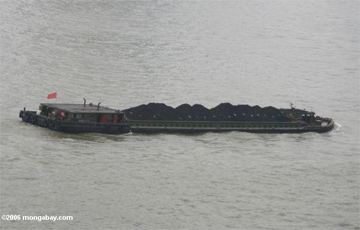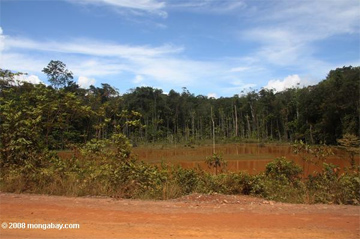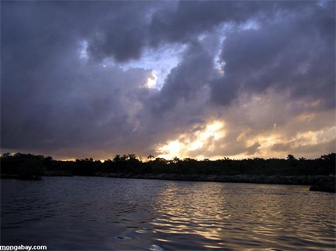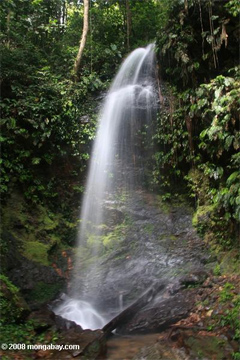Saline agriculture may be the future of farming
Jeremy Hance, mongabay.com
December 4, 2008
A future in saltwater: ways to adapt to a world with dwindling freshwater
Accessible and unpolluted freshwater is a necessity for every nation’s stability and well-being. Yet, while the demand for freshwater continues to rise, its sources face increasing threats from salinization, a process whereby the salt content of fresh water rises until the water becomes undrinkable and unusable in agriculture: the more salt in the soil, the lower the crop yield.
Salinization is occurring globally for a number of reasons. Perhaps surprisingly, irrigation is a major cause of salinity. High rates of continuous evaporation and transpiration, caused by irrigation, bring salts up from deep in the soil, contaminating arable land. In dry regions, the change from forest to agriculture moves salt from groundwater into the soil. Finally, rises in sea-level are inundating agricultural lands along the coasts with seawater. Over fifteen years ago, a study found that of the 230 million hectares of land under irrigation, 45 million had seen an increase in salt: nearly 20 percent of the world’s irrigated land.
|
|
To confront this problem an article in Science recommends that researchers and governments invest energy and funds on saline agriculture, which proposes growing salt-water crops to feed the world. Approximately one percent of terrestrial plans are able to grow in water with high salt content. Such salt-friendly species are called halophytes. The authors of the article, Jelte Rozema and Timothy Flowers, believe that many of these halophytes could become important crops, especially in areas where the salt content of the water is about half that of ocean water.
Halophytes grow as quickly as today’s agricultural crops, but actually produce higher biomasses. Rozema and Flowers cite the example of Salicomia bigelovii, a species of halophyte that they believe could become an important oilseed crop. Yields of the species are 18 tons per hectare—fifteen times the yield of sunflowers. Such crops could not only be grown in brackish waters, they could also feed the world’s growing population.
While the authors admit that “the use of saline water for irrigation is in its infancy”, they see enough promise in saline agriculture that they believe it to be “worth serious consideration and development.”
Removing the salt from Iraq
Iraq is taking a different approach to its salinity problems. Historically, Iraq possessed rich agricultural land: the region between the Tigris and Euphrates rivers was fertile enough to support the world’s first major civilization, the Sumerians.
|
|
However, after centuries of irrigation, large areas of agricultural land in Iraq have become so inundated with salt as to be useless. To make these fields fertile again, Iraq is pumping out the salt-infused groundwater from six million acres. The process is time-consuming, laborious, and expensive, but has worked in places like Australia.
“It’s a huge project: we are seeking to collect and drain all the salty water and remove groundwater from the center and the south (of Iraq),” Water Resources Minister Abdul Latif Rasheed said at the project’s launch as reported by Reuters.
Once rich in food production, years of war, continued instability, and little environmental oversight has forced Iraq to import nearly all of its food. Drought has only worsened the problem. Last year Iraq received only a third of its usual rainfall, straining agriculture and water resources. Currently, the Iraqi government is forced to spend a large portion of its budget on food rations for the public.
Rozema and Flowers write that salinization particularly affects less-developed nations in arid regions, such as Pakistan, India, Egypt, Tunisia, Peru, Bolivia, and, of course, Iraq. Furthermore, the authors warn that removing salt from agricultural lands as Iraq is doing may prove problematic, because the saltwater must be evaporated to ensure that it will not return.
Rozema and Flowers note that only one percent of the world’s water is fresh and humans already consume half of the readily amount available to us. Another one percent of the world’s water is brackish with salt content measuring somewhere between fresh water and sea water. The rest is seawater.
Solutions like Iraq’s could be a temporary fix, but the problem may prove too large for such a laborious and long process. New ideas, like saline agriculture, may prove necessary to ensure ample water resources for the present and the future.
CITATION: Jelte Rozema and Timothy Flowers. Crops for a Salinized World. 5 DECEMBER 2008 VOL 322 SCIENCE
Related articles


















